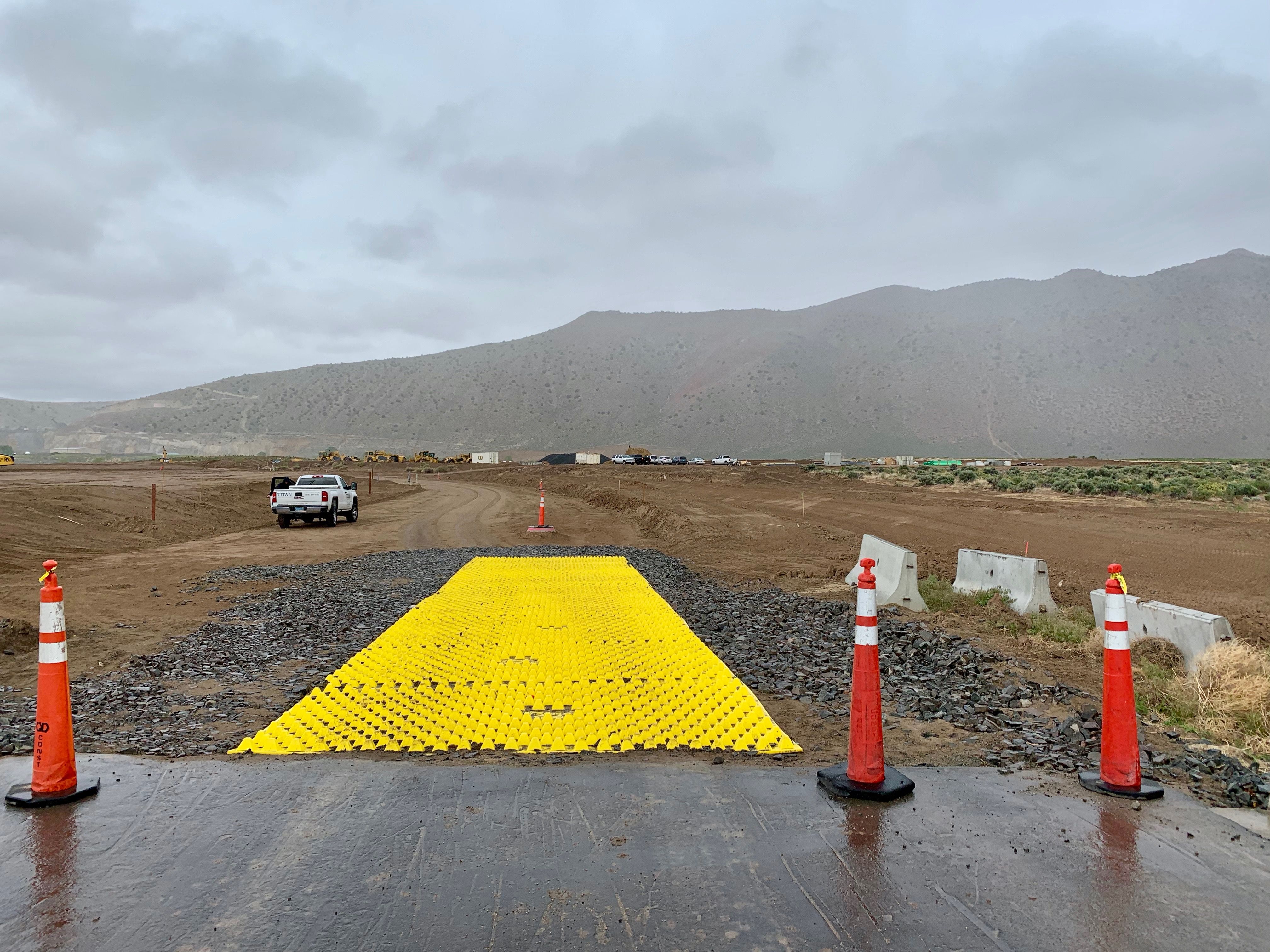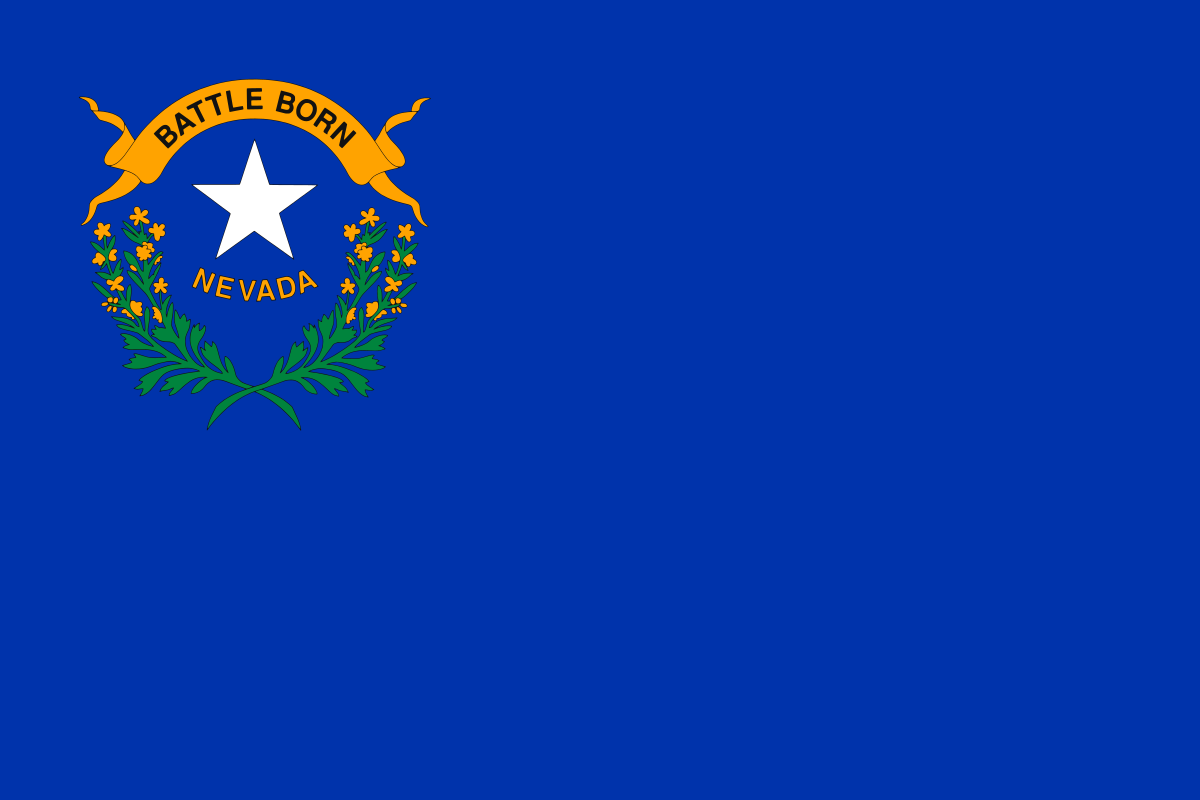Nevada Stabilized Construction Approaches TC-1 Detail
Nevada is located in the driest region of the United States therefore, protecting the water quality of the natural sources within the state is of vital importance. Nevada’s borders fall inside the Basin and Range Province which continues south into Mexico. The northern mountainous areas of Nevada receive the most moisture throughout the year. Nearly all the rainfall in Nevada is captured by natural endorheic valleys which have no outflow options. Consequently, the water that falls in this region is contained within its borders and does not feed any other river system making it highly susceptible to contamination and heavy pollutant density.
The Humboldt River collects drainage from 16,900 square miles of Nevada’s land. Most of the water filling this river is introduced through the Humboldt Wells natural spring. The river runs west through the heart of Nevada providing the only haven for many migratory birds. The Humboldt River ends in the Humboldt Lake an intermediately dry lake which has a long history of habitations by humans and wildlife alike. The Reese River is another large river that collects snowmelt from the mountains and runs its course south through central Nevada providing an irrigation source for farmers along its 180 miles of banks.
The Las Vegas Wash is an economically important marsh that collects and filters the water runoff from the urban city of Las Vegas before it is introduced to Mead Lake. This area is habitat for many species of wildlife and is vital to the diversity of sensitive life present in this region. Many programs such as the Southern Nevada Water Authority and the Las Vegas Valley Watershed Advisory Committee have been created to protect and restore the watershed system of Nevada. It is the responsibility of residents, industries and government agencies of Nevada to continue to work together to preserve the quality of the state’s water.
Nevada Division of Environmental Protection (NDEP) NPDES Stormwater Permits
The federal government began the Federal Water Pollution Control Act in 1942 which was amended in 1972 and became the Clean Water Act (CWA). These initiatives sparked laws and guidelines for industries and construction projects to mitigate pollutants introduced into the watershed system. Most notably of these requirements is the National Pollutant Discharge Elimination System (NPDES) Permit created by the EPA. This permit requires municipalities, industrial sites operators and construction operators to create plans that will reduce or eliminate the negative impacts of activities on surface water quality.
In Nevada the authority for enforcing the NPDES Permit has been granted to the NDEP Bureau of Water Pollution Control (BWPC). The NVR100000 Construction Stormwater General Permit is issued by the BWPC to cover many common types of construction sites. Operators planning construction project that will affect one or more acres of land must apply for coverage under the general permit before beginning operations. To apply for coverage under the general permit, an operator will submit a Notice of Intent (NOI) along with a prepared Stormwater Pollution Prevention Plan (SWPPP).
The SWPPP is a document that outlines potential sources of pollution on the site. In addition, the stormwater plan details the strategies which will be preformed to mitigate the pollution sources to minimize the impact on nearby water sources. The strategies and techniques are referred to as Best Management Practices or BMPs. Multiple BMPs may be included in the SWPPP to address a single source of pollution on the job site. The most common source of water pollution is soil which is deposited into the waterways causing excess sedimentation. Construction site entrances are a common source of sediment, so multiple erosion and sediment control BMPs are used to prevent soils and other contaminants from tracking onto public roadways including, road sweeping, stabilization, and drainage techniques.
NDEP compiles a Best Management Practices Toolbox which includes guides, manuals and handbooks from local city stormwater authorities. This toolbox is designed to aid contractors, engineers and inspectors as they prepare, design and enforce the NPDES Stormwater Permit Program.
Stabilized Construction Approach: Construction Entrance/Exit Detail
On a construction site, the first BMP to be installed is a stabilized construction approach, or stabilized construction entrance/exit, which is designed to minimize sediment track-out from vehicles onto public roadways. This erosion and sediment control technique works in conjunction with other BMPs including street sweeping, sediment traps, silt curtains, erosion fences, and vehicle egress sediment trapping. Temporary construction entrance are placed at all egress points from the construction site where traffic will exit directly onto a paved roadway or public right-of-way.
All construction entrance BMPs require regular maintenance to ensure proper function. In addition, street sweeping is required for any debris that escapes the entrance and is deposited onto the active roadway. Inspections should be conducted regularly and after any rain events to ensure that sediment is effectively minimized and to address any damage to the construction entrance.
A variety of construction techniques are available to contractors to address this pollution source.
Gravel Track out Pad
The Nevada Department of Transportation (NDOT) Construction Site BMP Manual includes an example stabilized construction entrance design which uses a traditional aggregate based track-out pad. The aggregate creates a rough surface which works to scrape mud and sediment from vehicle tires as they exit the site.
The manual includes specifications for a stone stabilized construction entrance stating that the track out pad is constructed by installing a layer of crushed rock or gravel aggregate. The area is filled to a minimum depth of 6” over an area of 50’ in length. Rocks should be at least 2” in diameter but should be sized to the largest vehicles on site to prevent traffic hazards. Small rocks may be tracked onto the active roadways, or become lodged between dual tire vehicles and expelled at high speeds.
The entrance should be monitored daily as the gravel will eventually become compacted and saturated with sediment and and debris. When the surface is no longer rough, operators must introduce additional aggregate to ensure adequate performance. If the aggregate entrance is ineffective at removing sediment from the vehicles the length of the pad must be extended or supplemented with an additional BMP for track out control.
A wheel wash is commonly added to a gravel entrance to remove any pollutants that still cling to the vehicle.
Entrance/Outlet Tire Wash
When a stone stabilized construction entrance is not sufficient to contain the tracking of sediment onto the roadway, a wheel wash is often used. In its simplest form a tire wash is a control method that uses pressurized water to remove remaining sediment and pollutants from vehicles as they exit the construction zone. Wheel wash systems can be manually operated or automated, and some systems can recycle some of the used water to reduce water consumption. All types of tire washing methods will require the site to have access to a water supply and power.
Additionally, all used water must be diverted into a sediment basin to contain to collect the sediment laden water and contain it on-site. Wheel wash systems will require maintenance to clean out filters and sediment basins as they fill with dirt over time.
FODS Trackout Control System
The FODS Stabilized Construction Entrance System is a modern BMP designed to minimize construction site vehicle track out. The tracking mats are made from durable 12’ wide by 7’ long HDPE mattings which are studded with pyramids on the surface. The pyramids create a rough surface which causes tire treads to spread open and release trapped debris.
Compared to traditional aggregate approaches, FODS offers a number of benefits to site operators. The FODS system does not become compacted or flattened over time and is up to 59% more effective than aggregate based systems. The FODS Trackout Control Mats System can be installed over any substrate and does not require any power or water source to operate. Because the system does not use rock, there is nearly no risk of rocks entering the roadways or being expelled from dual tire vehicles.
Because the reusable system is more effective than rock, the mats are well suited for compact work environments. A 1x5T mat configuration (35’ long) is commonly used to replace 70’ rock entrance while providing a wide turning radius for exiting traffic. The mats provide a significant savings to contractors as they can be reused for 10+ years, eliminating the cost of construction entrance materials. FODS can be installed in as little as 30 minutes and can be anchored to dirt or on concrete and asphalt in urban settings.
The system is easily deployed in as little as 30 minutes which allows contractors to relocate and reuse the system as needed on each project. The mats are designed to be reused on multiple projects throughout their 10+ year lifespan.

